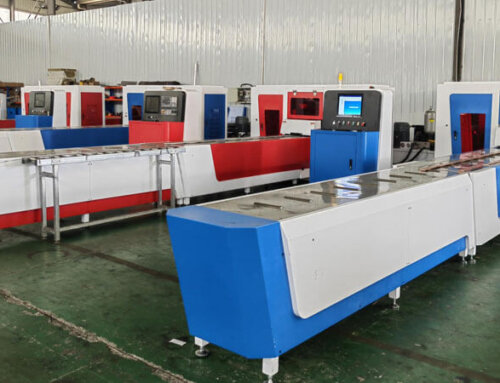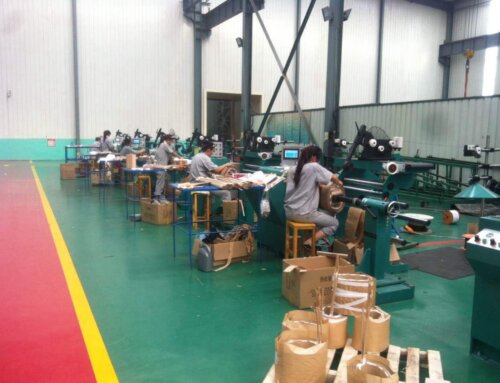Expanding Mandrel is suitable for winding high, medium and low voltage coils with inner holes within the specified range;
1.2 Suitable for unwinding and rewinding of coiled materials;
1.3 Suitable for use with horizontal winding machine and vertical winding machine.
structure introduction for Expanding Mandrel
3.1 The main body adopts a cage structure;
3.2 Central axis: assumes the centering of the cage structure, so that the supporting element is translated in the axial direction, and the translation is completed by the left and right thread pairs;
3.3 The diameter telescopic is a wedge support structure; self-locking fastening device is provided;
3.4 Spindle rotation: drive by reducer. The reducer can be used for handle operation. Reduction ratio: 30:1.
4.use and operation of Expanding Mandrel
Reasonable adjustment and use of molds play a vital role in ensuring product quality, maintaining mold accuracy, and improving service life, and should cause operators to attach great importance to it.
4.1 Adjustment of die diameter
- a) Place the mold steadily to ensure that the diameter of expansion and contraction is not obstructed;
- b) The diameter adjustment should be based on the principle from small to large (from less than nominal size → nominal size direction). When size adjustment
When the adjustment is larger than the nominal size, it should be reduced to within the nominal size, and then expanded to the nominal size;
- c) Pre-adjust the die diameter according to the use requirements, and the pre-adjusted diameter should be pre-adjusted by 0.3-0.5mm.
- d) Pre-adjusted diameter = (nominal size of circumference measurement + 1~5mm)/π
- e) If you need to add a paper tube before winding the coil, you should pay special attention to the torque controller when using an electric wrench to control it at 10Nm
(Should absolutely avoid using the full power output of an electric wrench), and pay attention to the tightening situation. When the paper tube is tightened, use manual loading and tightening, and the final torque on the handle shall not be greater than 10Nm, or the force on the handle shall not be greater than 4.2kg to ensure that the mold will not be damaged by blind loading!
- f) Check and verify the adjusted size.
4.2 Installation of side stop
- a) The side stop is generally assembled at the lower end of the mold, and its flat part faces the start of the coil.
- b) Install the number of side stoppers according to the weight of the coil. The installation of the side stoppers must ensure that the positioning planes are in the same plane and the side
The underside of the block should be supported by a cushion block on the work surface of the vertical winding machine to ensure the safety and accuracy of coil winding.
- c) In order to ensure that the coil does not slide in the axial direction during the winding process, the side stopper must be reliably fastened.
4.3 Use of the lever
The shift rod is used to turn the coil during horizontal winding. When the winding die is installed on the horizontal winding machine, the shift rod is connected to the winding machine face plate, and the shift rod should be stuck in the U-shaped groove of the winding die flange. Inside, the installation of the dial block is completed;
4.4 Trial run and start coil winding;
4.5 Extraction of coil
- a) Completely loosen the fastening bolts of the guide plates at both ends;
- b) Use a manual wrench to rotate the shaft of the reducer (note the direction of rotation) to shrink the diameter of the mold, and wait until the resistance is significantly reduced
Reduce the mold with an electric wrench;
- c) Use a crane to slowly lift the special coil spreader tooling, and lift the coil out of the mold body.
4.6 Use of additional layers
When a coil with a certain inner diameter needs to be wound with an additional layer, the number of the additional layer should be kept consistent with the number of the inner layer to ensure
Verify the cylindricity after assembly.
5. Contraindications of Expanding Mandrel
5.1 Pay attention to the direction of rotation, especially when the diameter of the mold needs to be reduced when the mold is drawn out;
5.2 The expansion and contraction of the mold should be strictly in accordance with the diameter range of the mold to avoid damage to the internal components;
5.3 If you feel a sudden change in the torque of the cranking handle during diameter adjustment or it is particularly difficult to shake, you should stop the operation immediately and check according to the following steps:
- a) Whether it has reached the minimum or maximum diameter;
- b) Whether the output shaft and shaft seat of the reducer worm are normal;
- c) Whether there are foreign objects stuck between the bent plates;
- d) Whether the phantom has abnormal noise, and whether the internal support rod has fallen off;
- e) Whether there are obstacles around which hinder the expansion and contraction of the expansion and contraction beam;
- f) Whether there is dirt or squeezed between the central shaft screw and screw nut;
- g) Whether the reducer is normal;
- h) Whether the drive shaft bearing is damaged
6.Maintenance and maintenance of Expanding Mandrel
6.1 Pay attention to keeping the outer surface clean, avoid hitting, lifting, or prying the surface with sharp objects, and prevent the indentation and appearance of the wooden board on the outer surface.
damage.
6.2 The winding die should be stored vertically;
6.3 Place it in a ventilated and cool place, and put on the machine clothing.
6.4 Raise the winding die to the maximum size every three months, observe whether there is grease in the threaded transmission part of the central shaft, and use a long rod to lightly apply a layer of clean grease on the threaded part, and apply it to the end guide groove every three months. A little grease;
6.5 Check the fastening bolts frequently. If they are accidentally lost, they should be filled in time to prevent the mold from deforming;
6.6 The add-on board should be removed for storage, and placed flat on a special support.
6.7 Maintenance and disassembly plan of reducer
When the reducer needs to be disassembled, first remove the bottom flange of the winding die, hoist the mold to two parallel pads, and place a wooden block about 10mm away from the reducer in the middle. Use a wrench to disconnect the reducer. Nuts, and then reduce the height of the block under the reducer to completely remove the reducer for maintenance. Note: In the process of disassembly, the winding die should be reliably pre-suspended by driving to ensure the safety of the repairer.
Transformer manufacturing equipment foil winding machine, winding machine







Wow, wonderful blog layout! How long have you been blogging for? you made blogging look easy. The overall look of your website is fantastic, as well as the content! Nicky See Flanders
Good post. I will be going through a few of these issues as well.. Daveen Jim Dygert
I truly appreciate this post. I have been looking all over for this! Thank goodness I found it on Bing. You have made my day! Thx again Heath Wylie
great site thanks.